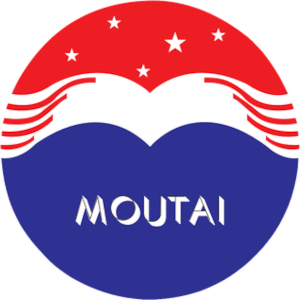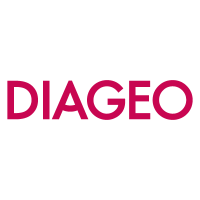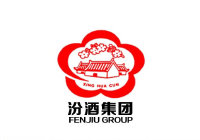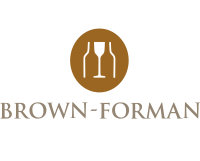Viva Wine Group AB
STO:VIVA
Profitability Summary
Viva Wine Group AB's profitability score is 52/100. We take all the information about a company's profitability (such as its margins, capital efficiency, free cash flow generating ability, and more) and consolidate it into one single number - the profitability score. The higher the profitability score, the more profitable the company is.
Score
We take all the information about a company's profitability (such as its margins, capital efficiency, free cash flow generating ability, and more) and consolidate it into one single number - the profitability score. The higher the profitability score, the more profitable the company is.
We take all the information about a company's profitability (such as its margins, capital efficiency, free cash flow generating ability, and more) and consolidate it into one single number - the profitability score. The higher the profitability score, the more profitable the company is.
Score
Score
Margins
Profit margins represent what percentage of sales has turned into profits. Simply put, the percentage figure indicates how many cents of profit the company has generated for each dollar of sale.
Profit margins help investors assess if a company's management is generating enough profit from its sales and whether operating costs and overhead costs are being contained.
Earnings Waterfall
Viva Wine Group AB
|
Revenue
|
4.2B
SEK
|
|
Cost of Revenue
|
-3.3B
SEK
|
|
Gross Profit
|
862m
SEK
|
|
Operating Expenses
|
-609m
SEK
|
|
Operating Income
|
253m
SEK
|
|
Other Expenses
|
-83m
SEK
|
|
Net Income
|
170m
SEK
|
Margins Comparison
Viva Wine Group AB Competitors
| Country | Company | Market Cap |
Gross Margin |
Operating Margin |
Net Margin |
||
|---|---|---|---|---|---|---|---|
| SE |
V
|
Viva Wine Group AB
STO:VIVA
|
3.7B SEK |
20%
|
6%
|
4%
|
|
| CN |

|
Kweichow Moutai Co Ltd
SSE:600519
|
2T CNY |
76%
|
67%
|
49%
|
|
| CN |

|
Wuliangye Yibin Co Ltd
SZSE:000858
|
517.1B CNY |
61%
|
48%
|
37%
|
|
| UK |

|
Diageo PLC
LSE:DGE
|
45.5B GBP |
60%
|
29%
|
18%
|
|
| ZA |
D
|
Distell Group Holdings Ltd
JSE:DGH
|
40.7B Zac |
25%
|
9%
|
6%
|
|
| CN |

|
Shanxi Xinghuacun Fen Wine Factory Co Ltd
SSE:600809
|
265B CNY |
58%
|
45%
|
34%
|
|
| US |

|
Constellation Brands Inc
NYSE:STZ
|
33.2B USD |
51%
|
34%
|
7%
|
|
| CN |

|
Luzhou Laojiao Co Ltd
SZSE:000568
|
194.7B CNY |
74%
|
58%
|
44%
|
|
| FR |

|
Pernod Ricard SA
PAR:RI
|
23.7B EUR |
60%
|
26%
|
10%
|
|
| US |

|
Brown-Forman Corp
NYSE:BF.B
|
16.3B USD |
59%
|
28%
|
24%
|
|
| CN |

|
Jiangsu Yanghe Brewery Joint-Stock Co Ltd
SZSE:002304
|
115.9B CNY |
58%
|
33%
|
28%
|
Return on Capital
Return on capital ratios give a sense of how well a company is using its capital (equity, assets, capital employed, etc.) to generate profits (operating income, net income, etc.). In simple words, these ratios show how much income is generated for each dollar of capital invested.
Return on Capital Comparison
Viva Wine Group AB Competitors
| Country | Company | Market Cap | ROE | ROA | ROCE | ROIC | ||
|---|---|---|---|---|---|---|---|---|
| SE |
V
|
Viva Wine Group AB
STO:VIVA
|
3.7B SEK |
10%
|
5%
|
10%
|
6%
|
|
| CN |

|
Kweichow Moutai Co Ltd
SSE:600519
|
2T CNY |
38%
|
31%
|
50%
|
43%
|
|
| CN |

|
Wuliangye Yibin Co Ltd
SZSE:000858
|
517.1B CNY |
27%
|
22%
|
34%
|
82%
|
|
| UK |

|
Diageo PLC
LSE:DGE
|
45.5B GBP |
36%
|
8%
|
16%
|
12%
|
|
| ZA |
D
|
Distell Group Holdings Ltd
JSE:DGH
|
40.7B Zac |
15%
|
7%
|
17%
|
12%
|
|
| CN |

|
Shanxi Xinghuacun Fen Wine Factory Co Ltd
SSE:600809
|
265B CNY |
41%
|
27%
|
52%
|
33%
|
|
| US |

|
Constellation Brands Inc
NYSE:STZ
|
33.2B USD |
8%
|
3%
|
17%
|
15%
|
|
| CN |

|
Luzhou Laojiao Co Ltd
SZSE:000568
|
194.7B CNY |
34%
|
22%
|
35%
|
76%
|
|
| FR |

|
Pernod Ricard SA
PAR:RI
|
23.7B EUR |
7%
|
3%
|
9%
|
5%
|
|
| US |

|
Brown-Forman Corp
NYSE:BF.B
|
16.3B USD |
28%
|
12%
|
17%
|
13%
|
|
| CN |

|
Jiangsu Yanghe Brewery Joint-Stock Co Ltd
SZSE:002304
|
115.9B CNY |
16%
|
13%
|
19%
|
22%
|
Free Cash Flow
Free cash flow (FCF) is the money a company has left over after paying its operating expenses and capital expenditures. The more free cash flow a company has, the more it can allocate to dividends, paying down debt, and growth opportunities.
If a company has a decreasing free cash flow, that is not necessarily bad if the company is investing in its growth.















































 You don't have any saved screeners yet
You don't have any saved screeners yet
